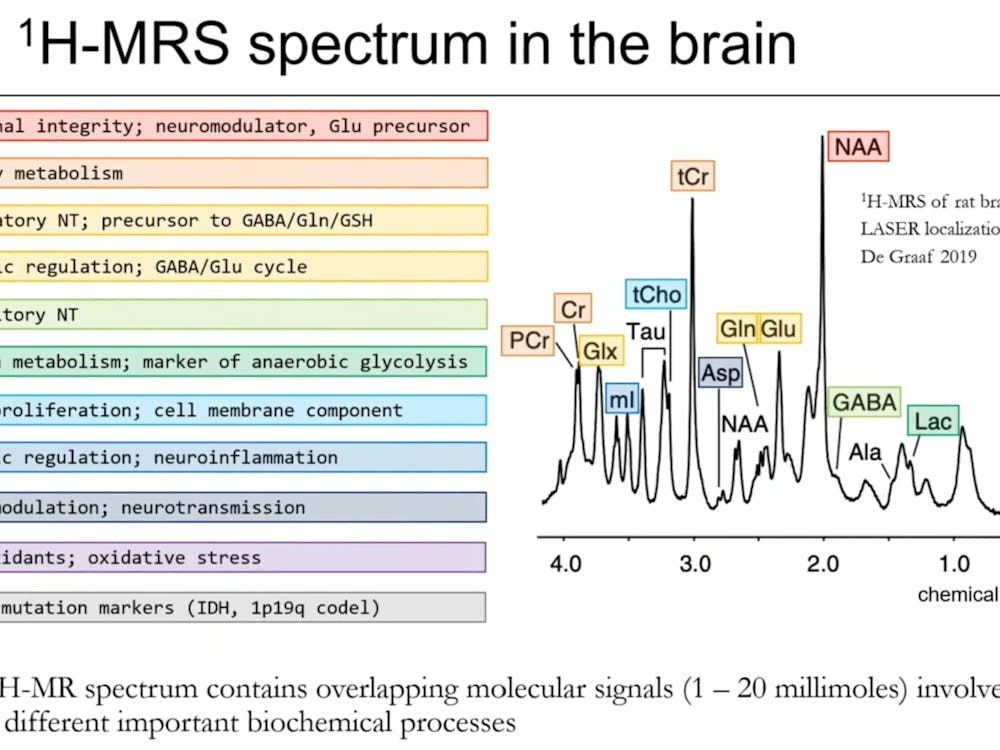President Ronald Reagan established the month of November as National Diabetes Month to increase awareness about the disease that currently impacts more than 38 million people in the United States, with higher prevalence in American Indian and Alaska Native, Black and Hispanic populations.
Diabetes is the most common endocrine disorder in the United States and can be separated into multiple categories including type 1, type 2 and gestational diabetes mellitus. Type 1 is a genetically-linked autoimmune condition that prevents the production of insulin, a hormone that regulates glucose uptake from the bloodstream and into the cells. In patients with type 1 diabetes, their immune system attacks the insulin-producing beta cells in the pancreas. Type 2 occurs when the body becomes insulin-resistant, resulting in higher levels of blood sugar; type 2 diabetes accounts for more than 90% of the diabetes cases diagnosed worldwide. Gestational diabetes occurs when pregnancy hormones prevent insulin production.
Common symptoms of diabetes include frequent urination, weight loss, fatigue and blurry vision. Diabetes has long-term effects on other organs including an increased risk of cardiovascular disease and neuropathy.
In an interview with The News-Letter, Tom Donner, the Director of The Johns Hopkins Diabetes Center, discussed more about the endocrine disorder and his current research with type 1 diabetes.
“We have been witnessing diabetes rates increasing…[this is a result of] more routinely testing patients blood sugar levels and our lifestyles [changing] a lot, with developed countries becoming considerably less physically active and food becoming more readily available, especially higher calorie foods,” he said “This has contributed to higher rates of particularly type 2 diabetes. There are also increased rates of type 1 diabetes for reasons we don’t fully understand, namely what is triggering the autoimmune system.”
However, Donner emphasized the progress made in diabetes treatments and addressed misconceptions about the disease.
“Once people develop diabetes, [they may think] nothing can be done about it. Many people have close family members including parents and grandparents with diabetes. Before we began treating diabetes more effectively, they saw that diabetes could cause vision loss, kidney failure and an increase in the risk of amputations. I think that's an important misconception to overcome, because we have so many effective treatments to prevent those complications today,” Donner said.
Donner is currently leading the Hopkins site for TrialNet, a project that screens first-degree relatives to patients with type 1 diabetes and examines potential predispositions for the disease to identify it as early as possible. One measurement is of autoantibodies, which are immune cells that attack the body’s healthy cells. The indication of two or more different types of autoantibodies are seen as a strong indicator of developing the disease.
“The TrialNet patient population with 2 positive type 1 diabetes autoantibodies we are studying who are at very higher risk are ideally suited for interventions that can prevent the progression to elevated bloodstream levels and overt type 1 diabetes,” Donner stated.
Another study Donner is involved with is DIAGNODE‑3, which examines type 1 diabetes patients with a specific genetic haplotype, HLA DR3-DQ2, that has been associated with an increased risk for the disease. The drug of interest, Diamyd®, is injected into a lymph node in the groin to regulate the immune cells that attack the beta cells in the pancreas. This allows patients to continue maintaining regular levels of insulin production by the time of diagnosis, making it easier to manage the disease and decreasing the possibilities of complications without immune suppression.
Funded by Vertex Pharmaceuticals, Donner also worked on a clinical trial that took Zimislecel, a stem-cell-derived islet-cell therapy that functions like beta cells, and infused them through the hepatic portal vein into the liver with immunosuppressive therapy.
“From the first twelve patients who’ve gotten these treatments with type 1 diabetes, ten of them are completely off insulin [by day 365] and have good blood sugar control. So that’s quite exciting. The primary drawback of that study is patients require immunosuppressive therapy, so we’re only administering these cells to patients who have severe low blood sugar reactions that are potentially life-threatening,” Donner explained.
Aside from clinical trials, Donner is also collaborating with Abdel-Rahim A. Hamad, an associate professor of Pathology and Medicine at the Hopkins School of Medicine to examine the properties of a new lymphocyte which they called the X cell. It has the properties of both T and B cells; Donner and Hamad suspect that it triggers type 1 diabetes by playing a role in attacking beta cells. Antibody therapy specifically targeting and preventing the function of X cells might act as a potential prevention and cure for type 1 diabetes.
“When we give it to mice that develop type 1 diabetes, we can prevent and reverse the disease. We’re in the process right now of trying to move this antibody to human trials as a potential prevention and cure,” Donner stated.
When asked about his mindset toward his research and patient care, Donner noted the importance of understanding the root questions driving his science and clinical practices.
“‘Why does a disease process happen? How can we then intervene in a way to prevent the disease from developing?’ Major changes to the way we approach treatments often occur when people can think out of the box,” he remarked. “People have been working on solutions for years, and it's those creative thinkers who look at a problem broadly in terms of ‘What could be the mechanism for that problem?’, confirm it’s a potential mechanism and then think about how to intervene to prevent that disease pathway…It’s pretty general approach that can apply to any type of research.”
In addition, multiple advancements have been made in the field of type 2 diabetes treatments. GLP-1 agonists and SGLT2 inhibitors in particular have been observed to regulate blood sugar levels as well as decrease the risk for serious diabetes complications. GLP-1 agonists promote insulin secretion and prevent glucagon secretion, mimicking the action of the GLP-1 hormone, and some are FDA-approved to reduce the risk of heart attack and similar cardiovascular issues. SGLT2 inhibitors lower blood sugar levels by preventing glucose reabsorption in the kidney, and have also been seen to prevent heart failure.
“These medications that are extremely effective at controlling blood sugar levels are also now helping decrease the rates of serious diabetes complications,” Donner said. “From a type 2 diabetes standpoint, those two drug classes stand out as having really revolutionized the way we approach the pharmacological treatment of type 2 diabetes.”





